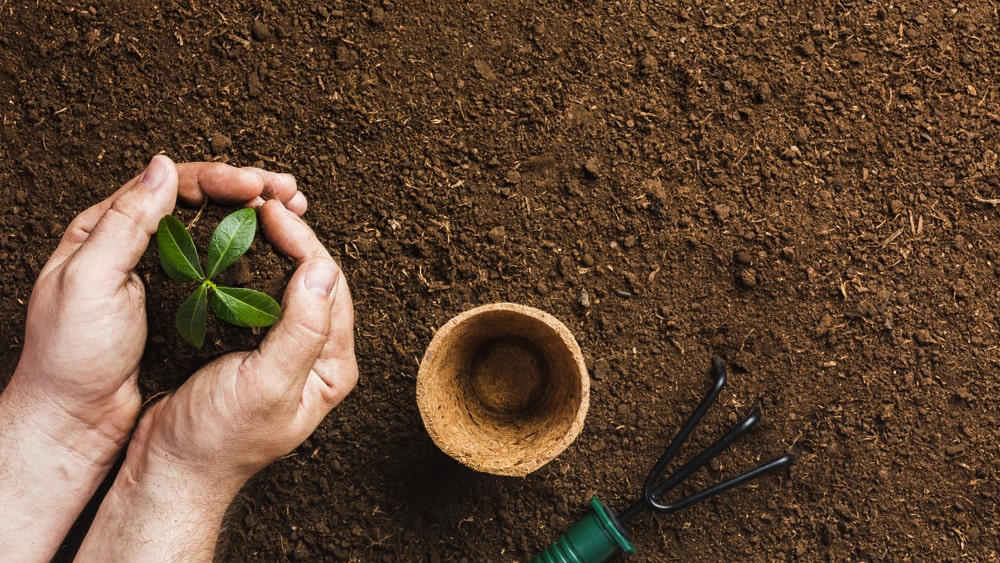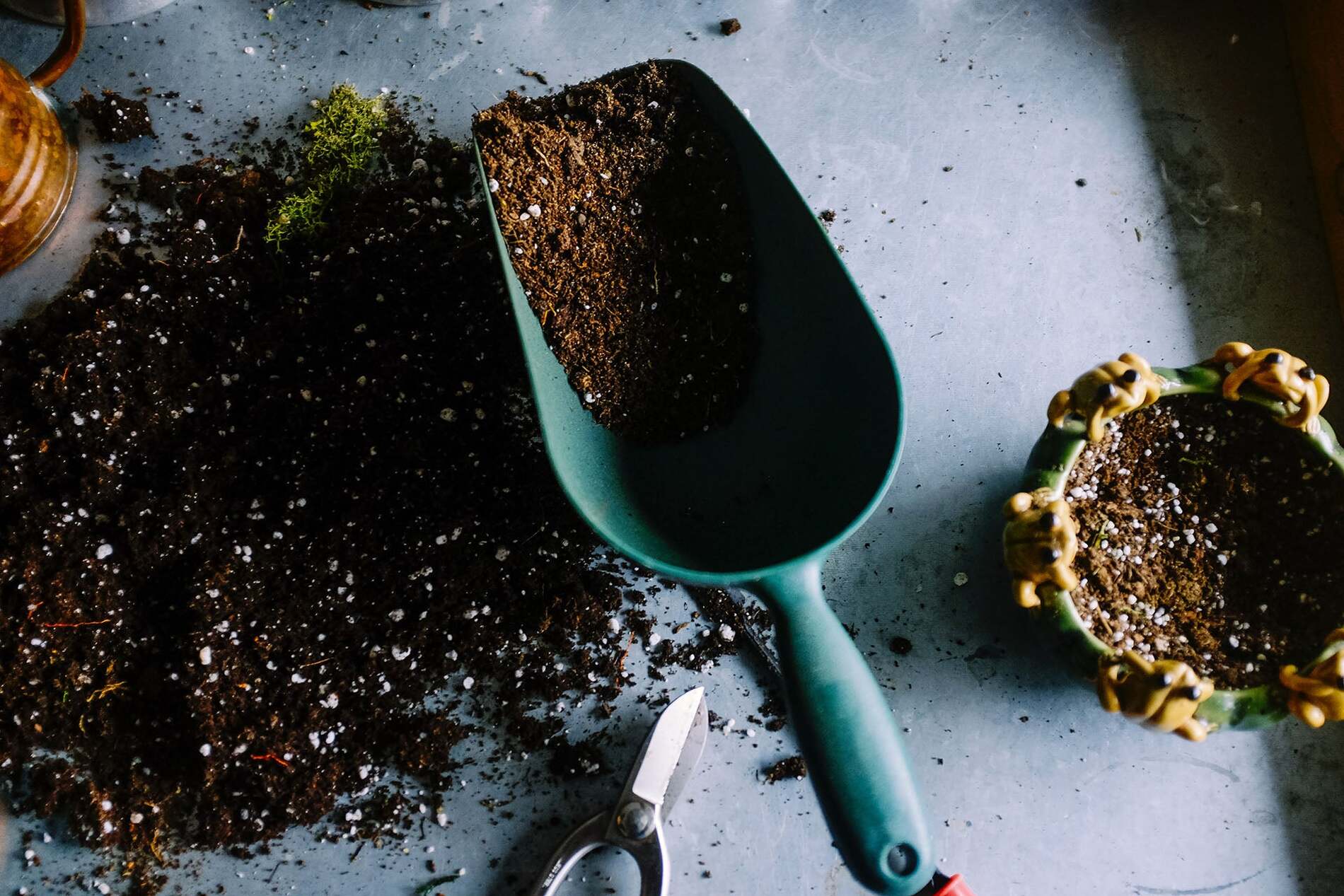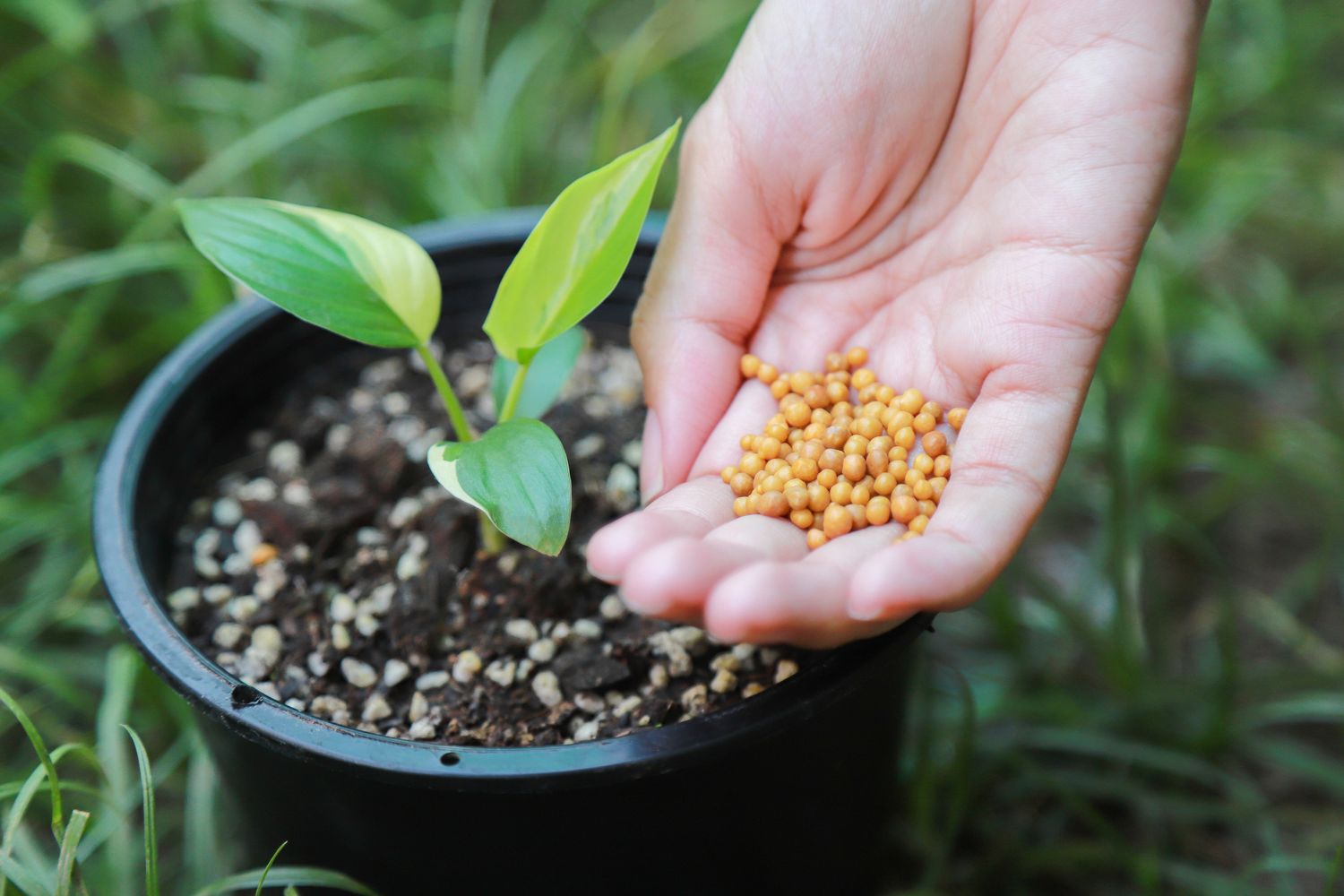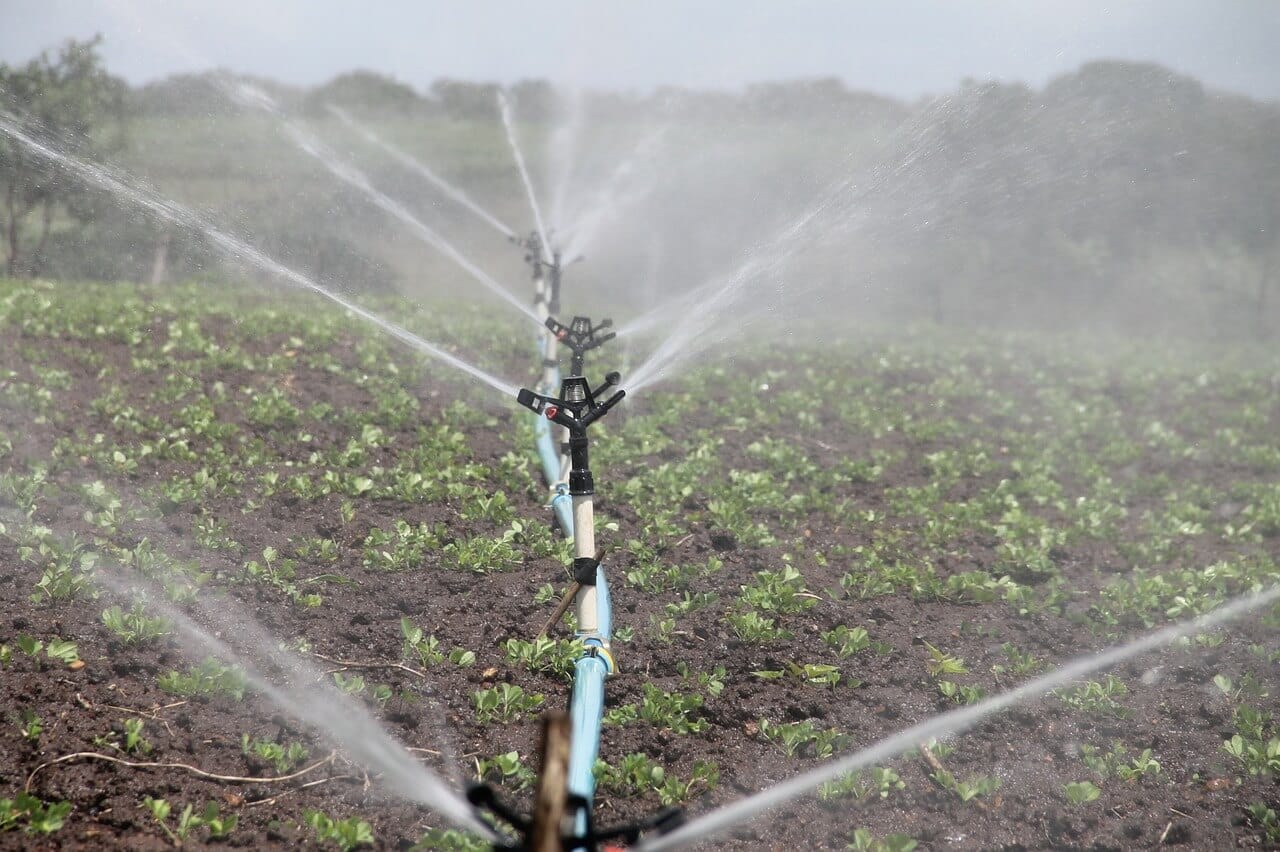Home>Gardening Basics>Understanding Soil>What Are The Different Types Of Soil


Understanding Soil
What Are The Different Types Of Soil
Modified: February 10, 2024
Learn about the various types of soil and enhance your understanding of soil composition, fertility, and characteristics.
(Many of the links in this article redirect to a specific reviewed product. Your purchase of these products through affiliate links helps to generate commission for Chicagolandgardening.com, at no extra cost. Learn more)
Table of Contents
Introduction
Soil is a fundamental component of our natural environment, playing a crucial role in supporting plant growth and providing habitat for a diverse range of organisms. It is a complex mixture of minerals, organic matter, water, air, and countless microorganisms. Understanding the different types of soil is essential for various purposes, such as agriculture, construction, and environmental management.
Soil can vary significantly in its composition and properties, depending on factors like climate, geology, and vegetation. Each type of soil has unique characteristics that influence its fertility, drainage capacity, and nutrient-holding capacity. This article will explore the ten most common types of soil and provide insights into their distinguishing features.
Please note: While the following descriptions provide a general overview of each soil type, it is important to remember that soil can vary within a given type and even within a small area. Therefore, it is essential to conduct proper soil testing to get accurate information about the specific soil characteristics in a particular location.
Sandy Soil
Sandy soil is characterized by its coarse texture and large particles. It has a gritty feel and is often well-drained due to the ample space between its particles. Sandy soil is known for its excellent drainage and aeration capabilities, as water moves through it easily. However, this also means that sandy soil can dry out quickly and has a low water-holding capacity, which can be a challenge for plants in dry climates or during drought.
Due to its low nutrient retention capacity, sandy soil tends to have fewer nutrients compared to other soil types. Plants grown in sandy soil may require frequent fertilization to compensate for the lack of nutrients. On the positive side, sandy soil warms up quickly in the spring, allowing for earlier planting and germination.
Gardening in sandy soil requires some special considerations. To improve its fertility and water-holding capacity, organic matter such as compost or well-rotted manure can be added. This helps to increase nutrient content, improve moisture retention, and provide a better environment for beneficial microorganisms.
While sandy soil may pose challenges for certain plants, it has its advantages. The fast-draining nature of sandy soil makes it less prone to waterlogging and root rot, making it suitable for plants that prefer dry or well-drained conditions. Additionally, sandy soil is easier to work with and doesn’t compact easily.
Some plants that thrive in sandy soil include cacti, succulents, lavender, rosemary, and herbs that prefer well-drained conditions.
Clay Soil
Clay soil is composed of fine particles that are densely packed together. It has a sticky, compact texture when wet, and when dry, it can become hard and difficult to work with. Clay soil has excellent water-holding capacity, allowing it to retain moisture for extended periods. However, this can also lead to poor drainage, which can cause waterlogging and adversely affect plant roots.
One of the challenges of clay soil is its tendency to become compacted, preventing proper root development and inhibiting air circulation. Amending clay soil with organic matter, such as compost or well-rotted manure, can improve its structure and drainage. This will create channels for water and roots to penetrate, enhancing the overall health of plants.
Clay soil has high nutrient retention capacity, making it rich in essential minerals and organic matter. However, it can be slow to warm up in the spring, delaying planting and germination. Despite these challenges, clay soil also has its benefits. Its ability to hold water well can be advantageous in regions with frequent drought or in areas where water availability is limited.
When selecting plants for clay soil, it is important to choose those that are tolerant of the heavy, compacted nature of clay. Plants with deep root systems, such as shrubs and trees, can thrive in clay soil as they are more able to penetrate through the dense layers. Additionally, plants with fibrous root systems, like grasses and certain perennials, can adapt well to clay soil.
Plants that are suitable for clay soil include daylilies, asters, hostas, and switchgrass. It is also possible to improve clay soil by incorporating soil amendments, such as sand or gypsum, to help loosen its structure and improve drainage.
Silt Soil
Silt soil is composed of fine particles that are smaller than sand but larger than clay. It has a smooth, silky texture and a moderate water-holding capacity. Silt soil is well-draining and retains nutrients better than sandy soil, but it can become compacted and difficult to work with if it lacks organic matter.
Due to its smaller particle size, silt soil is more fertile than sandy soil and can retain moisture for longer periods. It has good drainage and aeration properties, allowing plant roots to access oxygen and preventing waterlogging. However, it is crucial to manage irrigation carefully to avoid overwatering, as excessive moisture can lead to compacted soil and root rot.
Silt soil is generally easy to cultivate and work with, making it suitable for various gardening purposes. Its improved water-holding capacity compared to sandy soil makes it ideal for growing crops and plants that require a constant supply of moisture, but not excessive wetness.
While silt soil has its advantages, it can also become easily eroded by wind or water due to its fine particle size. This makes proper soil conservation practices, such as planting cover crops or using organic mulch, important to protect the soil from erosion.
When selecting plants for silt soil, consider those that can handle both moisture and good drainage. Plants with shallow root systems, like lettuce, spinach, and carrots, tend to do well in this type of soil. Additionally, many ornamental plants, such as roses and perennials, thrive in silt soil due to its fertility and adequate water-holding capacity.
Improving silt soil can be done by incorporating organic matter, such as compost or well-rotted manure, to enhance its nutrient content and overall structure. This will help maintain good drainage while improving the soil’s ability to retain moisture.
Loam Soil
Loam soil is considered the ideal soil type for gardening and agriculture due to its balanced composition of sand, silt, and clay particles. It has a crumbly texture and is often dark in color, indicating a high organic matter content. Loam soil consists of approximately equal parts of sand, silt, and clay, bringing together the best characteristics of each soil type.
Loam soil offers excellent drainage while retaining adequate moisture, striking a perfect balance for most plants. It has good water-holding capacity, allowing plants to access moisture without becoming waterlogged. Loam soil also has excellent nutrient retention properties, providing a fertile foundation for plant growth.
With its well-balanced composition, loam soil promotes healthy root development and allows for efficient nutrient uptake. Plant roots can penetrate easily through the loose structure, accessing both moisture and essential nutrients. Additionally, its good drainage and aeration prevent the risk of soil compaction and the associated root and plant health issues.
Gardening in loam soil is a delight, as it provides a wide range of options for plant selection. The high fertility and optimal moisture levels make it suitable for growing a variety of plants, including vegetables, fruits, flowers, and ornamental plants. Some popular plants that thrive in loam soil include tomatoes, beans, sunflowers, and roses.
Although loam soil is considered the ideal soil type, it is important to note that it can still benefit from regular soil amendments to maintain its fertility and structure. Adding organic matter, such as compost or well-rotted manure, can further enhance the soil’s nutrient content and improve its overall health.
When gardening in loam soil, it’s crucial to monitor the moisture levels as excessive watering can lead to waterlogging. Regularly testing the soil and adjusting irrigation accordingly will help ensure optimal plant growth in loam soil.
Peat Soil
Peat soil, also known as peat moss or simply peat, is a unique type of soil that forms in wetland areas called peatlands. It is composed mostly of partially decomposed plant matter, such as mosses, sedges, and shrubs, which accumulate over thousands of years in waterlogged environments with limited oxygen.
Peat soil has a high water-holding capacity and can hold up to 20 times its weight in moisture. It is often dark brown or black in color and has a spongy texture. This type of soil is highly acidic due to the slow decomposition process that results in the release of organic acids.
While peat soil is rich in organic matter and nutrients, it has some unique characteristics that must be considered. Peat soil is acidic, which can affect the availability of certain nutrients to plants. It also decomposes slowly, making it difficult for plant roots to penetrate and obtain water and nutrients. Additionally, peat soil is susceptible to compaction when dry and can be challenging to rehydrate.
Peat soil is commonly used as a soil amendment or substrate in horticulture and gardening due to its unique properties. It is often mixed with other types of soil to improve water-holding capacity and nutrient retention. Peat soil is particularly beneficial for plants that prefer acidic conditions, such as blueberries, azaleas, and rhododendrons.
However, peat soil has attracted attention in recent years due to environmental concerns. Peatlands act as carbon sinks, storing substantial amounts of carbon dioxide. When peat soil is drained or harvested for commercial purposes, such as the production of peat moss, the stored carbon is released into the atmosphere, contributing to greenhouse gas emissions.
As a result, there has been a growing emphasis on sustainable alternatives to peat soil, such as coconut coir, compost, and other organic materials. These alternatives offer similar benefits in terms of water retention and nutrient availability, while also reducing the environmental impact associated with peat extraction.
Chalk Soil
Chalk soil, also known as limestone soil, is characterized by its high calcium carbonate content, derived from the weathering of limestone rock formations. It is alkaline in nature, with a pH level above 7. Chalk soil is typically light, well-draining, and has a rocky or gravelly texture.
One of the distinctive features of chalk soil is its ability to retain moisture while still providing excellent drainage. The porous nature of the soil allows water to pass through easily, preventing waterlogging and ensuring that plant roots have access to oxygen. However, the high permeability can lead to quicker drying out, making regular watering necessary.
Chalk soil is typically nutrient-rich, especially in terms of calcium. However, it can be deficient in other essential nutrients such as nitrogen and phosphorus. To address this, adding organic matter and balanced fertilizer can help supplement the soil’s nutrient content and ensure optimal plant growth.
Plants that thrive in chalk soil are often those that are native to limestone-rich regions. These plants have adapted to the alkaline conditions and can tolerate the higher pH levels. Some examples of plants that do well in chalk soil include lavender, rosemary, yarrow, and sedum.
Gardening in chalk soil can have its challenges. Some plants, particularly those adapted to acidic soil conditions, may struggle to thrive in the alkaline environment. It is important to choose plants that are suitable for chalk soil and establish a regular soil testing routine to monitor nutrient levels and pH.
Improving chalk soil can be done by incorporating organic matter, such as compost or well-rotted manure, which will help enrich the soil and improve its water-holding capacity. Regular soil amendments with acidic substances, like sulfur or acidic fertilizers, can also help lower the pH level over time for plants that prefer a more acidic environment.
Saline Soil
Saline soil, also known as salt-affected soil, is characterized by its high concentration of soluble salts, such as sodium, magnesium, and calcium ions. It typically occurs in arid and semi-arid regions with limited rainfall and poor drainage. Saline soil is often found in coastal areas, where sea spray or saltwater intrusion can contribute to its formation.
The high salt content in saline soil can be detrimental to plant growth. The excess salts impede water uptake by plants, leading to water stress and dehydration. Furthermore, the high salt levels can disrupt the balance of nutrients within plants, causing nutrient deficiencies and reducing overall plant health.
Saline soil is often visually identified by the presence of a white crust or salt deposits on the soil surface. In severe cases, plants may exhibit stunted growth, yellowing leaves, and increased susceptibility to pests and diseases.
Although saline soil poses challenges for growing most plants, there are plant species that have adapted to tolerate high salt levels. These plants, known as halophytes, have mechanisms to tolerate salt stress, such as specialized salt glands or efficient salt exclusion systems within their roots.
Improving saline soil can be a challenging process. One method is to leach the salt out of the soil through proper drainage and excessive irrigation. This process involves applying copious amounts of water to the soil to flush out the salts. However, it is essential to ensure proper drainage to prevent waterlogging.
In some cases, soil amendments such as gypsum or organic matter can help improve the structure and fertility of saline soil. Gypsum can help displace the sodium ions and replace them with calcium, reducing the impact of salinity. Organic matter can improve soil structure and provide additional nutrients for plant growth.
When dealing with saline soil, it is crucial to select plants that are salt-tolerant and suitable for the specific salt level in the soil. Some examples of salt-tolerant plants include saltmarsh grass, seashore dropseed, and some varieties of succulents.
Silty Soil
Silty soil is a type of soil that is composed of fine particles, smaller than sand but larger than clay. It has a smooth texture and feels soft to the touch when dry. Silty soil is often found in areas with flooding or near riverbanks, as the fine particles are easily transported by water and settle in low-lying areas.
One of the key characteristics of silty soil is its ability to hold moisture while still providing decent drainage. Silty soil has moderate water-holding capacity, retaining moisture for longer periods compared to sandy soil. This makes it suitable for a variety of plants that prefer consistent moisture levels.
Silty soil is generally highly fertile as it contains a significant amount of organic matter. This organic matter contributes to its dark color and provides nutrients for plant growth. Silty soil also has good nutrient retention properties, making it an excellent medium for plant growth.
Due to its fine particle size, silty soil tends to be more compact and can become easily eroded by wind or water. The compact nature can inhibit proper root development and reduce aeration in the soil. To improve the structure of silty soil, incorporating organic matter such as compost or well-rotted manure can help loosen the soil and improve its overall drainage and aeration.
When gardening in silty soil, it is essential to monitor moisture levels and avoid overwatering, which can lead to waterlogging. Regularly adding organic matter and applying balanced fertilizers can help replenish nutrients and maintain soil fertility.
Silty soil supports a wide range of plant growth and is highly suitable for growing vegetables, fruits, and ornamental plants. Its balanced moisture retention and nutrient availability make it a popular choice for agriculture and horticulture. Some plants that thrive in silty soil include lettuce, tomatoes, beans, roses, and hostas.
Overall, silty soil offers a fertile and water-retentive medium for plant growth, making it a valuable resource for gardening and agricultural practices. By understanding the unique characteristics of silty soil, gardeners can optimize their planting strategies and create a thriving garden or farm.
Sandy Loam Soil
Sandy loam soil is a well-balanced soil type that combines the properties of sandy soil and loam soil. It is composed of a mixture of sand, silt, and clay, with a higher proportion of sand particles. Sandy loam soil has a granular texture that is crumbly and loose, making it easy to work with.
One of the key advantages of sandy loam soil is its excellent drainage capabilities. The sandy component allows water to pass through quickly, preventing waterlogging and allowing for healthy root development. The loam component provides better moisture retention compared to pure sandy soil, ensuring that plants have access to an adequate water supply.
Sandy loam soil is well-aerated and allows for good root penetration. It also has good nutrient retention capacity, as the silt and clay particles help hold onto essential nutrients, preventing them from leaching out of the soil. This makes sandy loam soil highly fertile and suitable for a wide range of plants.
Gardening in sandy loam soil provides great flexibility, as various plants can thrive in this balanced soil type. It is ideal for growing vegetables, annual flowers, and perennials. Additionally, sandy loam soil supports the growth of grass exceptionally well, making it suitable for lawns and sports fields.
For optimal plant growth in sandy loam soil, it is important to regularly monitor soil moisture levels. Sandy loam soil has a higher drainage rate than heavier soils, so more frequent watering may be necessary, especially in dry periods. Adding organic matter, such as compost or well-rotted manure, can enhance soil fertility and help retain moisture.
When selecting plants for sandy loam soil, choose those that thrive in well-drained conditions. Examples include tomatoes, zucchini, marigolds, petunias, and lavender. However, it’s important to note that the specific plant requirements should also be considered, as some plants may prefer a slightly more acidic or alkaline soil pH.
In summary, sandy loam soil offers the best of both worlds with its optimal drainage and moisture retention capabilities. Its balanced composition and fertility make it a versatile soil type for various gardening and horticultural endeavors.
Silty Clay Soil
Silty clay soil is a type of soil that combines the properties of silty soil and clay soil. It consists of a higher proportion of fine silt and clay particles, creating a smooth and sticky texture. Silty clay soil is often found in areas with slow water drainage and is commonly formed from the deposition of sediment in river floodplains.
One of the notable characteristics of silty clay soil is its ability to retain moisture. The fine particles in the soil hold water very effectively, making silty clay soil less prone to drying out than other soil types. This can be advantageous in areas with low rainfall or during dry periods, as it helps to maintain soil moisture and supports plant growth.
However, the high clay content in silty clay soil also contributes to its tendency to compact easily. When wet, the soil becomes heavy and dense, making it challenging to work with and potentially leading to poor drainage. To improve the drainage and structure of silty clay soil, adding organic matter and incorporating amendments like sand or gypsum can help increase porosity and break up compacted layers.
Gardening in silty clay soil requires careful consideration and proper management. It is essential to avoid overwatering, as the soil’s high water retention capacity can easily lead to waterlogged conditions and root rot. Additionally, regular soil testing to monitor nutrient levels and pH is important to ensure proper soil fertility and to make any necessary adjustments.
Despite its challenges, silty clay soil can support a wide range of plants once it is properly managed. Many plants that prefer moist conditions and have shallow root systems can thrive in silty clay soil. Examples include certain vegetable crops like kale, lettuce, and broccoli, as well as ornamental plants like ferns and hostas.
Improving the structure and fertility of silty clay soil is an ongoing process. By incorporating organic matter, performing regular soil amendments, and practicing good soil management techniques, gardeners can create a healthier and more productive garden in silty clay soil.
In summary, silty clay soil offers the benefits of good moisture retention but also presents challenges related to soil compaction. With proper management techniques and suitable plant selection, silty clay soil can be transformed into a fertile and productive garden soil.
Conclusion
Understanding the different types of soil is essential for successful gardening, agriculture, and land management. Each soil type has its own unique characteristics that impact water drainage, nutrient retention, and overall plant growth. By recognizing the qualities of various soils, gardeners and farmers can make informed decisions about plant selection, soil amendments, and irrigation practices.
From sandy soil to clay soil, silt soil to saline soil, each type comes with its own advantages and challenges. Sandy soil drains quickly but requires more frequent watering and fertilization, while clay soil retains moisture but can become compacted. Silty soil offers good drainage and fertility, but it can erode easily if not properly managed.
Loam soil stands out as the ideal soil type, combining the benefits of sandy, silt, and clay soils. It provides balanced drainage, moisture retention, and nutrient availability for plants to thrive. However, all types of soil can be improved through the addition of organic matter, proper irrigation techniques, and regular soil testing.
When working with specific types of soil, it is important to select plants that are well-suited to their characteristics. Some plants, like lavender and succulents, thrive in sandy soil with good drainage, while others, like ferns and hostas, prefer the moisture retention of silty soil. Understanding the soil type and the plants’ needs will increase gardening success and overall plant health.
Regardless of the soil type, ongoing soil maintenance and management are key to maintaining soil health and fertility. Regular soil testing, adding organic matter, using appropriate soil amendments, and practicing proper irrigation and drainage techniques are all crucial for optimal plant growth and soil sustainability.
By harnessing the knowledge of different soil types and their properties, gardeners and land managers can make informed decisions to create healthy, productive, and sustainable environments for plants and ecosystems to flourish.




